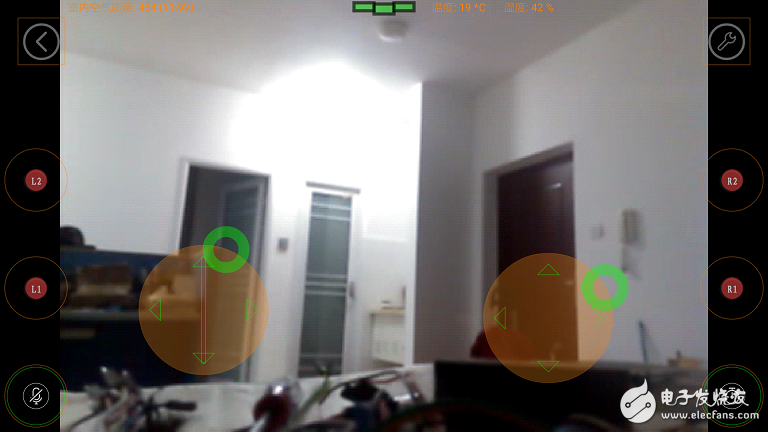Scientists print out the ear, nose, heart, liver and bladder in the laboratory, while patients waiting for liver, kidney and other human organ transplants account for more than 90% of the total, many people are waiting to die. 3D bioprinting is highly anticipated in promoting a qualitative leap in medical care . How far is 3D printing human organs from us?

Medical has applied 3D printing technology just "fur"
Chen Jimin, a professor at the School of Laser Engineering at Beijing University of Technology, said that the application of 3D printing technology in the medical field can be divided into three levels. The closer the application is to the human body, the more difficult it is to be. The distance from the human body is relatively simple and relatively easy to implement. The first layer is for human application in vitro. For example, a 3D printer can generate two-dimensional images and models of CT and MR two-dimensional images. The doctor can analyze the condition more intuitively, and can also help them to analyze and plan before surgery, reducing the risk of surgery.
Peng Jiang, deputy director of the PLA Institute of Orthopaedics, said that if you do S-type scoliosis surgery, you can use a 3D printer to print a model to analyze the extent to which the problem can be corrected. The application of 3D printing technology to surgical guidance has been very early, the technology is relatively mature, and the product approval is relatively simple. Therefore, it is possible to rely on the promotion of the market itself. However, the soft tissue model can only be used for training and surgical rehearsal. The surgery depends on the specific situation.
Chen Jimin said that the second layer is one step closer to the human body and is a medical aid. For example, in order to accurately plant the teeth, you can use the 3D printing technology to print the patient's tooth model, first use the computer to simulate the position, angle and depth of the implant, and then print out the "guide", with the "guide" teeth It can be implanted very accurately.
"The third layer, the tissues, scaffolds, bones and organs implanted in the human body, the application of this layer requires a high technical content, and there is still a certain distance from the application." Chen Jimin said.
The reporter learned that the current application of 3D printing technology in the medical field is not only used for preoperative guidance, but also custom-made personalized steel plates in fracture treatment. This does not help to avoid rejection, but the shape of the steel plate is better, the direction is more matching, and it is better fixed. The use of medical aids and 3D printing technology for human tissues and organs is still in the clinical trial or basic research stage. The medical application of 3D printing technology is only "fur".
Some industry experts pointed out that if 3D printing technology is the crown, then 3D bio-printing technology is the jewel in the crown, and the market potential is huge. In the United States, 8 million operations are performed to treat human tissue defects or necrosis each year, equivalent to a cost of 400 billion US dollars.
Where is the difficulty in applying 3D printing to human organs?
Zhou Gongyao, a professor at Drexel University and vice chairman of the China 3D Printing Technology Industry Alliance, said: "I started to contact 3D bioprinting in the 1990s and developed it for decades. I have not yet reached the stage of 3D printing organ transplantation. This is because life is no small matter. 3D printing ears, bladder and heart are all in the laboratory. Before implanting the human body, you have to do a lot of experiments, accumulate and analyze a lot of data, and constantly improve. There are still many things to do. ."
Grain powder is a powder product made by grinding and refining all kinds of grain, grain, beans and medicinal and edible raw materials. It is the general name of grain powder products. Grain powder refers to grain crops in general, rather than "rice, millet, millet, wheat and travancore" in the narrow sense. In a broad sense, Whole Grains include rice, millet, brown rice, corn, rice, glutinous rice, job's tears, black rice, red rice, soybean, red bean, mung bean, black bean, buckwheat, oats, wheat, sorghum, sweet potato and so on. The expanded powder made of this kind of raw materials is collectively called whole grains powder. In 2012, several enterprises in the country specifically for the development of grain powder market.
Whole grain flour can be eaten in two ways. One is cornflour and the other is cooked flour. Cornflour can be added to cold water, cooked after eating; Cooked powder can be served directly with boiling water. Our category is ripe grain powder, ready-to-eat grain powder, can be a single variety of grain grinding, can also be a plurality of varieties of mixed grain grinding, support custom, send samples.
Single Origin Cereal Flour,Raw Glutinous Rice Noodles,Single Origin Wheat Flour,Single Origin Cake Flour
XuChang Youjia Food Product Development Co., LTD , https://www.yjgrain.com